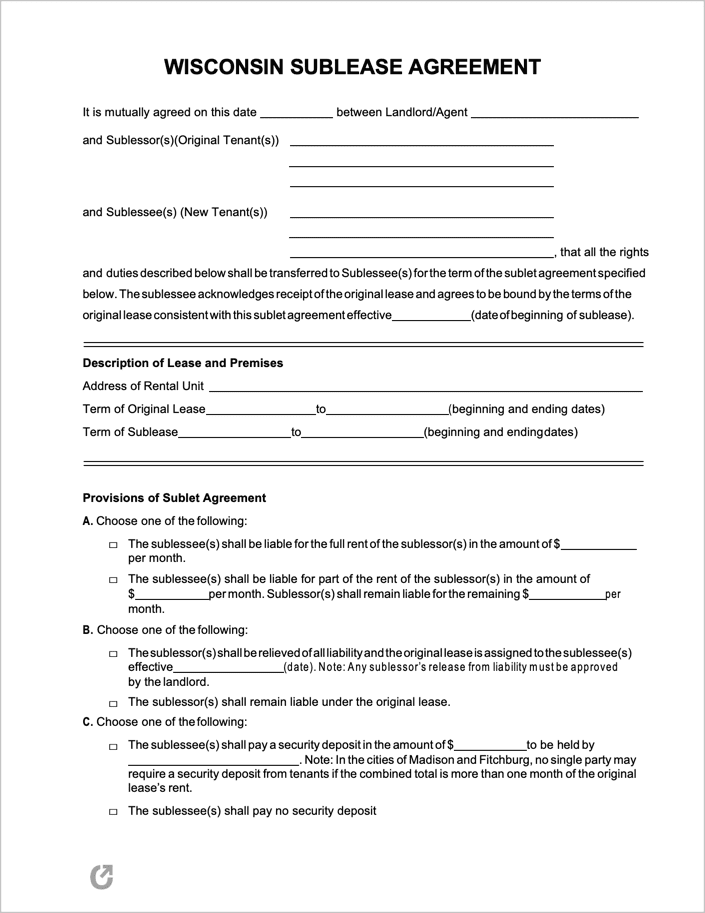Wisconsin Sublease Agreement
With a Wisconsin Sublease Agreement, tenants in the midst of a lease can find a new tenant (called the sublessee) to live in the rental in their place. Although responsibility is ultimately on the original tenant, finding a sublessee can allow the tenant to move-out without paying rent for a home or apartment going unused. A common instance in which subleases are used is traveling; usually, a tenant would be required to continue paying rent even while they are away. However, by subleasing the property, they can recoup some, if not all of the costs.
To reiterate, the original tenant (the sublessor) is still responsible for the lease they originally signed. If the sublessee were to skimp out on paying rent, were to damage the property, or breach a contract of the original lease agreement, the sublessor would be held accountable. Although the form can be a lifesaver, it should not be used without careful consideration for who the sublessee will be. If the sublessee is someone the sublessor does not know, requiring them to complete a rental application is strongly suggested.
Wisconsin law does not specify whether subleasing is a right of the tenant. So, to ensure the original tenant doesn’t commit a breach of contract by signing a sublease, they should:
- Check their lease to see if it permits subleasing, OR
- Contact their landlord for permission.
